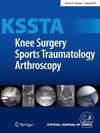Habitual patellar dislocation exhibits less severe rotational deformities but poorer trochlear development and higher incidence of patella baja compared with recurrent patellar dislocation in skeletally mature patients
Abstract
Purpose
This study compared the radiological characteristics between habitual and recurrent patellar dislocation in skeletally mature patients.
Methods
From 2017 to 2019, 77 skeletally mature patients with habitual patellar dislocation were surgically treated at a single institution and reviewed retrospectively. A total of 55 knees from these patients were included in the habitual patellar dislocation group. During the same period, 55 knees with recurrent patellar dislocation were randomly selected from 242 patients and included in the recurrent patellar dislocation group. Various bony deformities were measured and compared between the two groups. Additionally, a subgroup analysis was conducted among patients with habitual patellar dislocation, comparing those with and without an ‘invisible patella’ observed on true lateral views with 30° of knee flexion.
Results
The femoral anteversion angle (21.8° vs. 26.3°, p = 0.041), tibiofemoral rotation angle (9.7° vs. 12.4°, p = 0.042) and external tibial rotation angle (24.3° vs. 29.6°, p = 0.001) in the habitual patellar dislocation group were significantly lower than those in the recurrent patellar dislocation group. 54% of knees in the habitual patellar dislocation group had a patella baja, and this was in sharp contrast to the recurrent patellar dislocation group in which none of the knees had a patella baja. 49.1% of knees in the habitual patellar dislocation group showed ‘invisible patella’ at 30° of knee flexion, and knees with ‘invisible patella’ had significantly higher tibial tubercle-trochlear groove (TT-TG) distance (30.4 vs. 19.8, p < 0.001) and tibiofemoral rotation angle (13.2° vs. 6.4°, p < 0.001) than knees with a visible patella.
Conclusions
A distinct difference in bony anatomical features was observed between habitual and recurrent patellar dislocation in skeletally mature patients. Habitual patellar dislocation exhibited less severe rotational deformities of the lower extremity but showed poorer trochlear and patellar development, a larger TT-TG distance and a higher incidence of patella baja compared with recurrent patellar dislocation.
Level of Evidence
Level III.


 求助内容:
求助内容: 应助结果提醒方式:
应助结果提醒方式:


